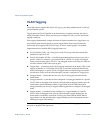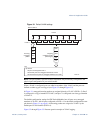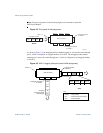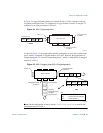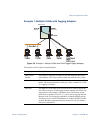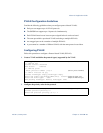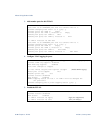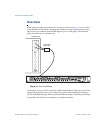Alteon OS Application Guide
88
Chapter 3: VLANs 42C4911, January 2007
Port-based vs. Protocol-based VLANs
Each VLAN supports both port-based and protocol-based association, as follows:
The default VLAN configuration is port-based. All data ports are members of VLAN 1,
with no PVLAN association.
When you add ports to a PVLAN, the ports become members of both the port-based
VLAN and the PVLAN. For example, if you add port EXT1 to PVLAN 1 on VLAN 2, the
port also becomes a member of VLAN 2.
When you delete a PVLAN, it’s member ports remain members of the port-based VLAN.
For example, if you delete PVLAN 1 from VLAN 2, port EXT1 remains a member of
VLAN 2.
When you delete a port from a VLAN, the port is deleted from all corresponding
PVLANs.
PVLAN Priority Levels
You can assign each PVLAN a priority value of 0-7, used for Quality of Service (QoS).
PVLAN priority takes precedence over a port’s configured priority level. If no priority level is
configured for the PVLAN (priority = 0), each port’s priority is used (if configured).
All member ports of a PVLAN have the same PVLAN priority level.
PVLAN Tagging
When PVLAN tagging is enabled, the switch tags frames that match the PVLAN protocol. For
more information about tagging, see “VLAN Tagging” on page 80.
Untagged ports must have PVLAN tagging disabled. Tagged ports can have PVLAN tagging
either enabled or disabled.
PVLAN tagging has higher precedence than port-based tagging. If a port is tag enabled
(/cfg/port x/tag), and the port is a member of a PVLAN, the PVLAN tags egress
frames that match the PVLAN protocol.
Use the tag list command (/cfg/l2/vlan x/pvlan x/taglist) to define the com-
plete list of tag-enabled ports in the PVLAN. Note that all ports not included in the PVLAN tag
list will have PVLAN tagging disabled.



